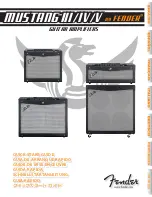
1) Simplicity and a minimum number of components is a key element, and is well reflected in
the quality of tube designs. The fewer pieces in series with the signal path, the better. This
often true even if adding just one more gain stage will improve the measured specs.
2) The characteristic of gain devices and their specific use is important. Individual variations
in performance between like devices is important, as are differences in topological usage. All
signal bearing devices contribute to the degradation, but there are some different
characteristics are worth attention. Low order nonlinearities are largely additive in quality,
bringing false warmth and coloration, while abrupt high order nonlinearities are additive and
subtractive, adding harshness while losing information.
3) Maximum intrinsic linearity is desired. This is the performance of the gain stages before
feedback is applied. Experience suggests that feedback is a subtractive process; it removes
information from the signal. In many older designs, poor intrinsic linearity has been corrected
out by large application of feedback, resulting in loss of warmth, space, and detail.
High idle current, or bias, is very desirable as a means of maximizing linearity, and gives an
effect which is not only easily measured, but easily demonstrated: Take a Class A or other
high bias amplifier and compare the sound with full bias and with bias reduced. (Bias
adjustment is easily accomplished, as virtually every amplifier has a bias adjustment pot, but it
should be done very carefully). As an experiment it has the virtue of only changing the bias
and the expectations of the experimenter.
As the bias is reduced the perception of stage depth and ambiance will generally decrease.
This perception of depth is influenced by the raw quantity of bias current. If you continue to
increase the bias current far beyond the operating point, it appears that improvements are
made with bias currents which are much greater than the signal level. Typically the levels
involved in most critical listening are only a few watts, but an amplifier biased for ten times
that amount will generally sound better than one biased for the few watts.
For this reason, designs which operate in what has been referred to as "pure" Class A are
preferred because their bias currents are much larger than the signal most of the time. As
mentioned, preamp gain stages and the front ends of power amplifiers are routinely single
ended "pure" Class A, and because the signal levels are at small fractions of a watt, the
efficiency of the circuit is not important.
4) Given the assumption that every process that we perform on the signal will be heard, the
finest amplifiers must employ those processes which are most natural. There is one element
in the chain which we cannot alter or improve upon, and that is the air. Air defines sound, and
serves as a natural benchmark.
Virtually all the amplifiers on the market are based on a push-pull symmetry model. The push-
pull symmetry topology has no particular basis in nature. Is it valid to use air's characteristic
as a model for designing an amplifier? If you accept that all processing leaves its signature
on the music, the answer is yes.
One of the most interesting characteristics of air is its single ended nature. Sound traveling
through air is the result of the gas equation




























